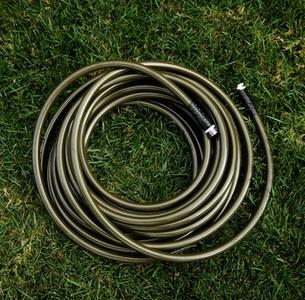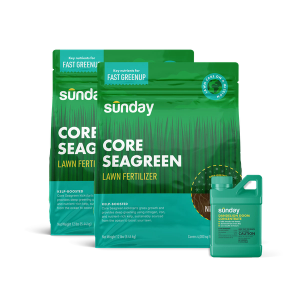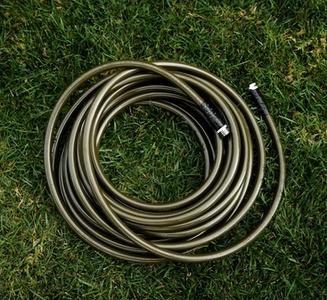What is soil made of?
Soil is much more than a foundation for your lawn—it is a living part of it. Composed of air, water, parent material, and organic matter, healthy soil is alive with millions of beneficial, microscopic organisms that help sustain life. Did you know that 50% of what soil is made of (air and water) you actually can’t see?
The half you can see (the dirt) is composed of organic matter and parent material. Organic matter is made of decaying plant or animal tissue either from old plants, insects or animals. Parent material is made of three primary ingredients: sand, silt, and clay. Clay holds nutrients and water in the soil. Silt holds some nutrients and sand doesn't hold water or nutrients as well. So, the composition of soil directly affects its ability to hold the correct amount of water and nutrients that plants need.
The three properties of soil
Formed over time through interactions between parent materials (rock), climate, and various organisms, soil is made of three primary properties: physical, chemical, and biological.
- Physical: This is the actual ground-up part of earth that we think of as soil, or dirt.
- Chemical: The reactions taking place within the soil between ph, water, and a wide range of nutrients.
- Biological: The living ecosystem of soil that includes organisms like insects, fungi, earthworms, and bacteria.
What makes soil healthy?
These same three properties—physical, chemical, and biological—can be measured to evaluate the heath of the soil. Overall, soil strength is determined by soil density, which is the weight of mineral particles and soil aggregation, or the ability of that soil to clump. Organic matter is also essential for healthy soil because it provides food and shelter for microbial life.
Three signs of healthy soil
- Porosity: Good airflow means there are air pockets between the particles, which also helps water move through the soil.
- Organic matter: Decaying plant, animal, and insect tissue.
- Life: Signs of insect and micro-organism life.
Three signs of unhealthy soil
- Compaction: Dense, dry soil with limited air flow and water absorption.
- No organic matter or an abundance of non-organic debris like discarded building materials.
- No Life: No microbial or insect life.
The chemical and biological properties of lawns are very important, but the physical properties are easier to see and can indicate a lot about the health of your soil. Ultimately, if your lawn looks healthy, it is healthy. Color can also be a great indicator of soil health. Dark brown or black soil can indicate that the soil rich in organic matter. Similarly, if you have soil that is an orange-reddish color, it can indicate soil rich in iron. Mending problems is difficult unless you have identified what and where the issue is. That’s where soil testing comes in.
The importance of soil testing
The best way to get to know your lawn is through soil testing. Here are some of the terms you may come across when you get test results:
- pH: pH is how acidic or basic your soil is. It influences nutrient availability and serves as the environment for nutrients in your soil.
- OM: Organic Matter is the amount of decaying material in your soil. OM should be at a minimum of 2%, or even higher for sandy soils.
- CEC: Cation Exchange Capacity is the soil’s ability to retain water and nutrients. 4-20 is a good range for lawns.
Ready to dig in to your results even more? Learn how to decode your soil test.
Less is more at Sunday
At Sunday, we use a practice called Minimal Levels of Sustainable Nutrition (or MLSN) to evaluate the nutrient health of your soil. Then, we use a "less is more" approach by only supplying the nutrients that the lawn needs, and nothing that it doesn’t. The secret to building a sustainable soil ecosystem is to support the soil’s (very efficient) natural processes. Not only will this help to keep the soil in shape, so it doesn’t become lazy and reliant on products, but also it's a more economically and environmentally friendly approach that helps prevent waste or unnecessary run-off.
Strong soil will grow with you
Soil degradation is affecting everyone. Globally, erosion, chemical application, abuse, and overuse have taken a toll on the same dirt that grows our food and provides critical wildlife habitat. Soil plays an important role with critical ecosystem services including offsetting carbon and filtering water as well as nutrient cycling—just to name a few! Globally, soil provides over $17 trillion in ecosystem services annually (1). That’s the importance of dirt! The benefit of healthy soil is that it makes sustaining life easier. We can help change the soil health of our planet by starting right in our own backyard. The healthier your soil is, the healthier our planet will be. And the earth and your lawn will thank you.
Cited sources:
- Science Policy Office, “Soil Ecosystem Services”, Soil Science Society of America

















